Defence Gardens | Online Nursery Lahore
Some of the most fascinating and historic public gardens in Lahore to visit, are nestled among the vibrant tapestry of the city’s rich cultural legacy, standing as eternal witnesses to the city’s evolution. From the imperial Mughal era to the present, Lahore’s green sanctuaries have hosted numerous stories, whispers of the past, and moments of peace for its inhabitants. This blog is a handpicked list of the “Top Gardens in Lahore,” a journey through lush landscapes and historical narratives that flourished and thrived long before Pakistan’s inception. Join us as we walk through these verdant havens, each a tribute to Lahore’s continuing allure and the seamless fusion of nature and history.
1- Shahdara Garden (شاہدرہ باغ):
Shahdara Bagh is a historic district in Punjab, Pakistan, located across the Ravi River from the Walled City of Lahore. Several Mughal-era monuments may be seen at Shahdara Bagh, including the Tomb of Jahangir, the Akbari Sarai, the Tomb of Asif Khan, the Tomb of Nur Jahan, and the Baradari of Kamran Mirza.
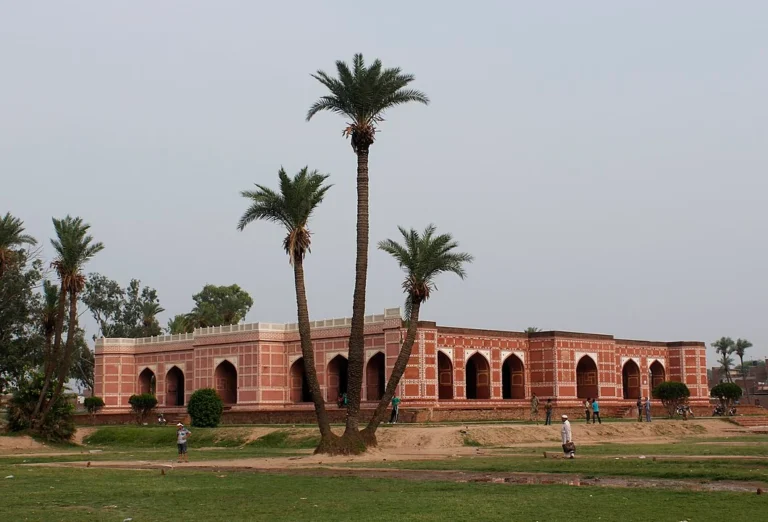

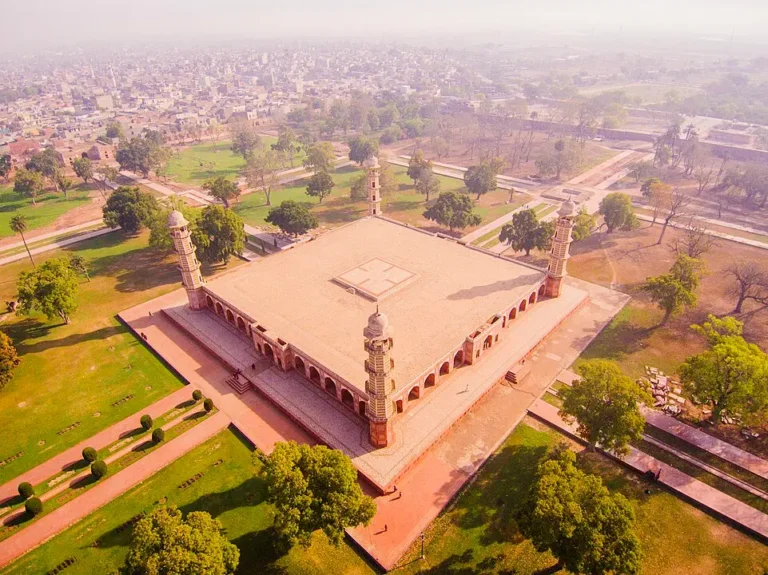
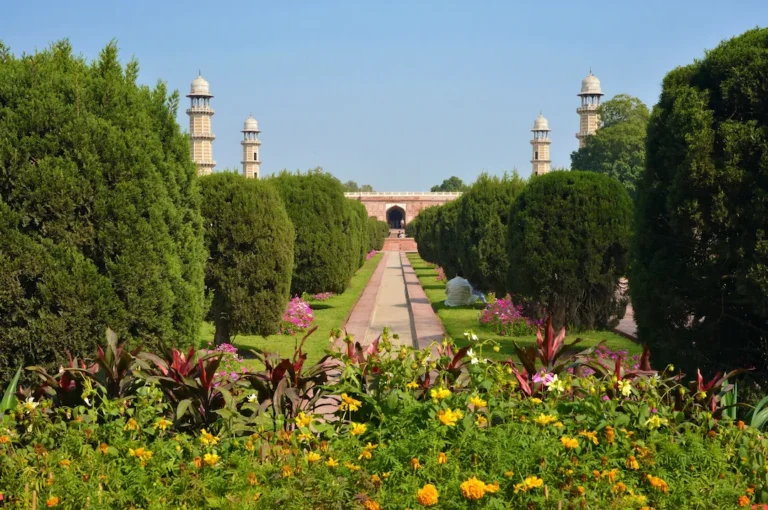
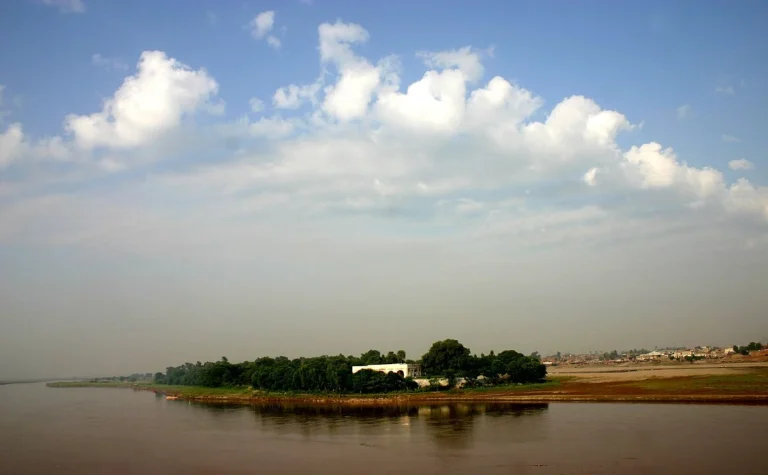
History:
Shahdara is also known as “the way of kings” and can be translated as “the door of kings.” Shah means “king” in Arabic, and dara means “path.” During the Mughal Empire in the 15th century, Shahdara was the entrance gate to Lahore. It is home to a number of significant Mughal architectural sites. The Akbari Sarai, the Tomb of Jahangir (Emperor from 1605 to 1627), and the tomb of his brother-in-law Asif Khan are among them. Kamran’s Baradari (Kamran Ki Baradari) is also located in Shahdara Bagh. Although this property was initially built on the Ravi River’s bank, the river’s course alteration transformed it into an island in the riverbed. The mausoleum of Mughal Princess Dohita Un Nissa Begum (1651-1697) is located in the tiny garden.
2. Shalimar Gardens / Shalamar Garden (شالامار باغ):
The Shalimar Gardens are a Mughal garden complex in the Pakistani city of Lahore. The gardens, dating back from the Mughal Empire’s creative and aesthetic pinnacle, are today one of Pakistan’s most famous tourist destinations.
The Shalimar Gardens were designed as a Persian paradise garden to depict an earthly ideal in which humans coexist in perfect harmony with all aspects of nature. The gardens’ construction began in 1641, under the reign of Emperor Shah Jahan, and was completed in 1642. The Shalimar Gardens were designated a UNESCO World Heritage Site in 1981 because they represent Mughal garden design at its pinnacle.
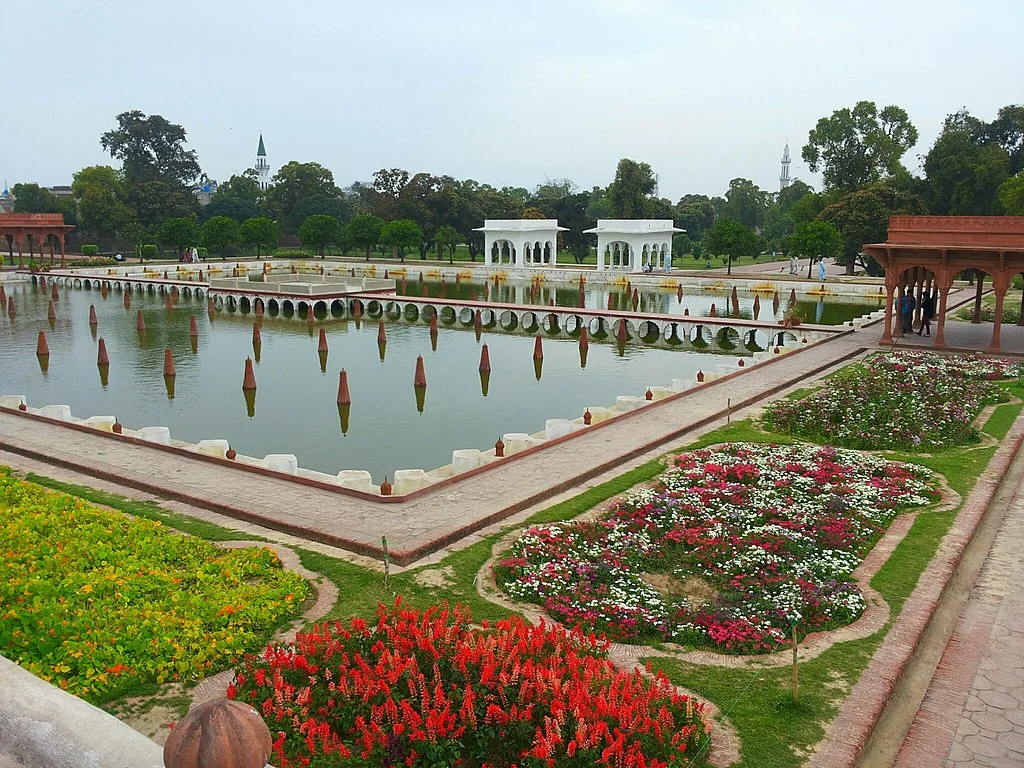
History:
The Shalimar Gardens, built by Shah Jahan in 1641-2, is a Mughal garden that combines Persian elements with medieval Islamic garden traditions, providing witness to the pinnacle of Mughal artistic expression.
The gardens’ construction began on June 12, 1641, and lasted 18 months. During the Sikh era, part of the garden’s marble was stolen and used to embellish the nearby Golden Temple and Ram Bagh Palace, while Lehna Singh Majithia stripped and sold the gardens’ expensive agate gate.
The garden under Sikh authority. ‘The Shalimar Gardens, Lahore’ lithograph from ‘The Court and Camp of Ranjeet Sing’ by William Godolphin Osborne, ca.1840.
The Shalimar Gardens were renovated by Maharaja Ranjit Singh in 1806.
General Ayub Khan nationalized the Gardens in 1962 because leading Arain Mian family members resisted his establishment of martial law in Pakistan.
3. Hazuri Garden (حضوری باغ):
Hazuri Bagh is a garden in Lahore, Punjab, Pakistan, bounded to the east by the Lahore Fort, to the west by the Badshahi Mosque, to the north by the Ranjit Singh Samadhi, and to the south by the Roshnai Gate. The garden was designed in the Mughal style during the reign of Maharaja Ranjit Singh. The Maharaja constructed the Hazuri Bagh Baradari in 1818 to commemorate his capture of the Koh-i-Noor diamond from Shuja Shah Durrani in 1813. The Serai Alamgiri caravanserai used to stand where Hazuri Bagh presently stands.
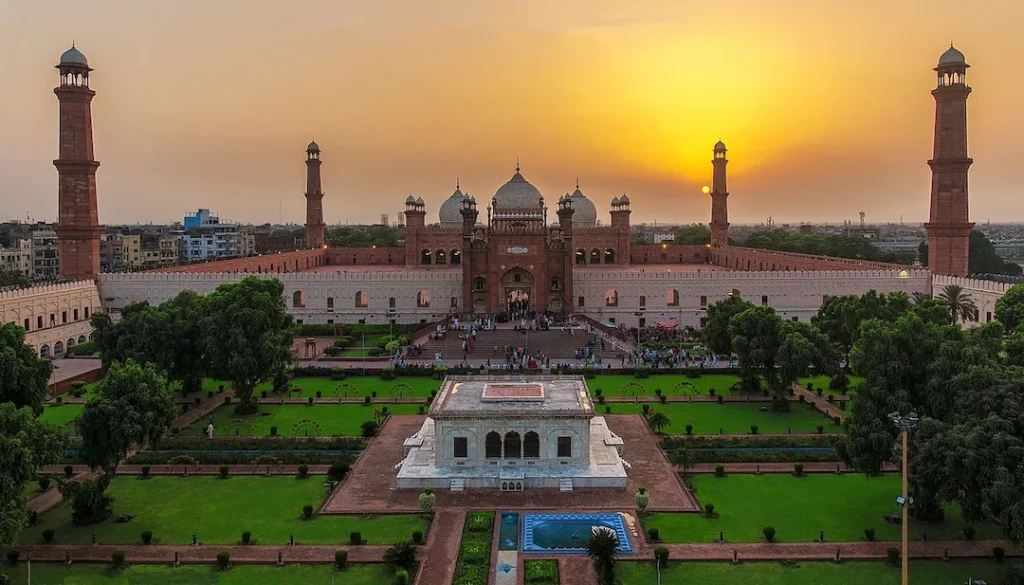
History:
The Hazuri Bagh garden was designed and created in the traditional Mughal style under the guidance of Faqir Azizuddin. It is reported that after its completion, Ranjit Singh, at the suggestion of Khushhal Singh Jamadar, ordered that marble vandalized from several Lahore mausoleums be used to build a baradari (pavilion) here. Khalifa Nooruddin was given this responsibility. The baradari’s beautiful cusped arches are supported by elegant carved marble pillars. The central courtroom, where Ranjit Singh presided, has a mirrored ceiling. Both the garden and the baradari, which was originally a 45-foot, three-story square with a basement reached by fifteen steps, were severely damaged during the Sikh wars and were finally reclaimed and laid out according to the original plan during the British time.
The top storey fell on July 19, 1932, and was never repaired or renovated. The tomb of Muhammad Iqbal, constructed in 1951, is located outside the Badshahi Mosque, across from the garden.
People come in the garden every Sunday afternoon to hear storytellers read traditional Punjabi Qisse, such as Heer Ranjha and Sassi Punnun, as well as other Punjabi Sufi poetry.
4. Lawrence Garden / Jinnah Garden (باغ جناح / لارنس باغ):
Bagh-e-Jinnah, previously Lawrence Gardens, is a historical park in the Pakistani city of Lahore. A botanical garden, Masjid Dar-ul-Islam, and the Quaid-e-Azam Library are all part of the enormous green space.
Within the park, there are additional entertainment and recreational facilities, including an open-air theater, a restaurant, tennis courts, and the Gymkhana Cricket Ground. It is on Lawrence Road, near to the Lahore Zoo, and right across “The Mall Road” from the Governor’s House.
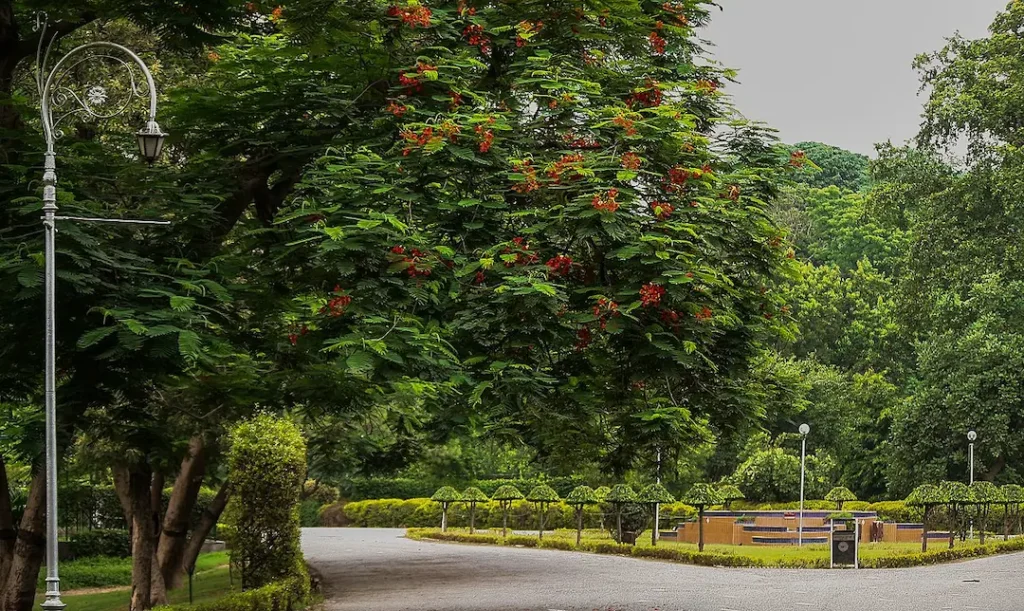
History:
The Agri-Horticultural Society of the Punjab had initially held the land, which had been planned as a botanical garden modeled after Kew Gardens in London. The garden was named after John Lawrence, 1st Baron Lawrence, who served as the Punjab’s first Chief Commissioner and then Lieutenant Governor before becoming Viceroy of India from 1864 to 1869.
The site had become a wilderness by 1860, when the first phase of Lawrence Gardens was laid out, with part of it utilized as a zoo and the rest as a leisure park for badminton, archery, and cricket. The first tree was planted in the garden in January 1862, and Lawrence Hall was built the same year for public gatherings and theatrical entertainment. Montgomery Hall was finished in 1866, and the site was expanded in 1868 with the purchase of land to the south of the gardens. By 1876, the garden had grown to include 80,000 trees and bushes from 600 different species, including trees from India’s plains, Austria, Syria, and southern Europe.
Lawrence Garden began selling plants produced on its grounds to the general public at the turn of the twentieth century. Fruit trees were brought in from all across the British Empire, including grapes and mulberries from Kabul, peaches from Agra, and plantains from Calcutta. The Department of Agriculture took over upkeep of the garden in 1904, and Government College University, Lahore has been in charge of it since 1912.
Lawrence Gardens was renamed Bagh-e-Jinnah in honor of Muhammad Ali Jinnah after Partition and the establishment of Pakistan. A statue of Lawrence, which stood outside the neighboring Lahore High Court, was removed in August 1951 and later relocated to Northern Ireland’s Foyle and Londonderry College. In 1984, Lawrence and Montgomery Halls were converted into the Quaid-e-Azam Library.
